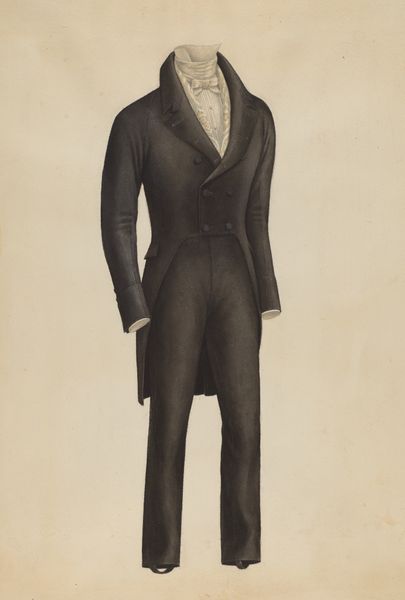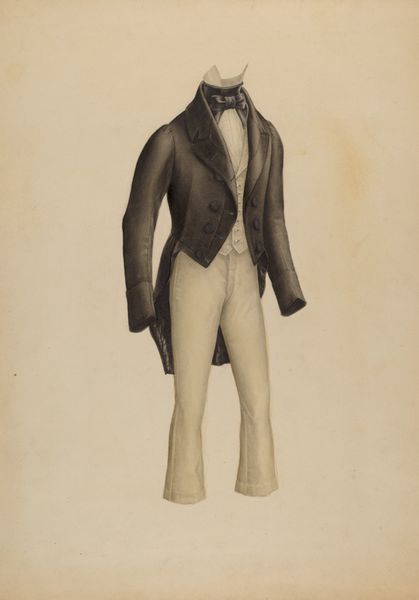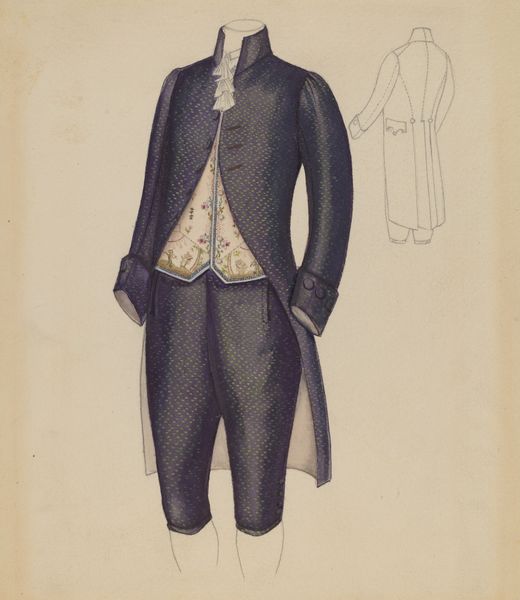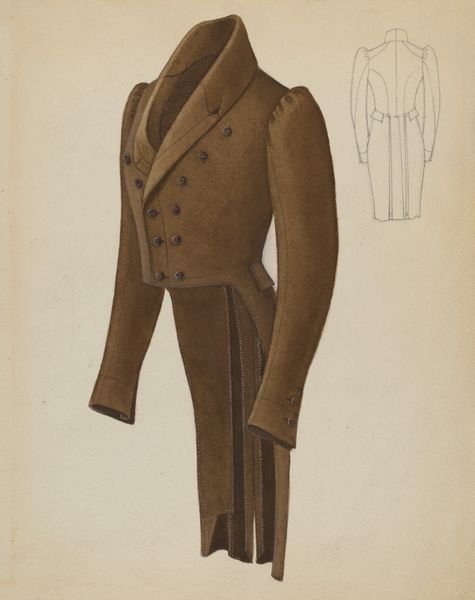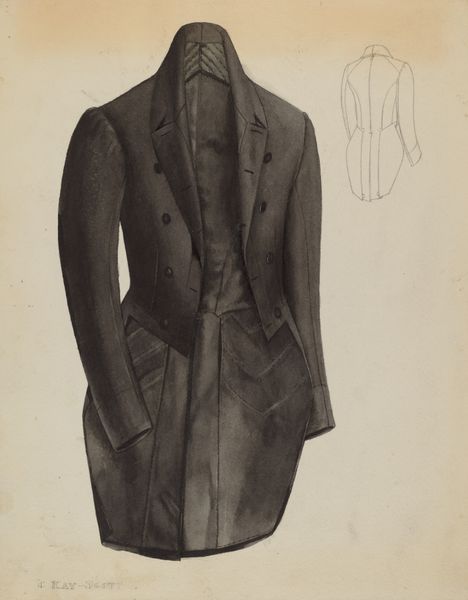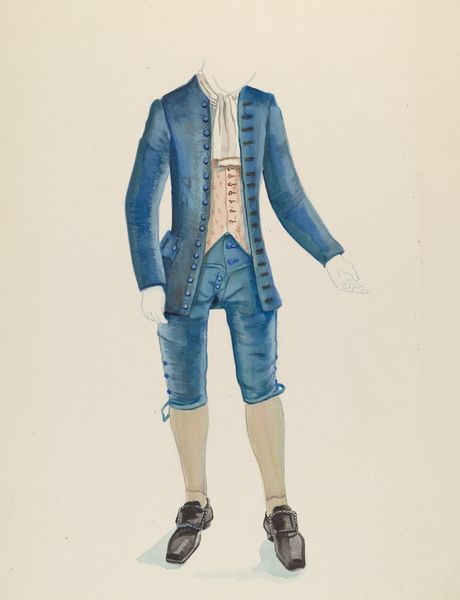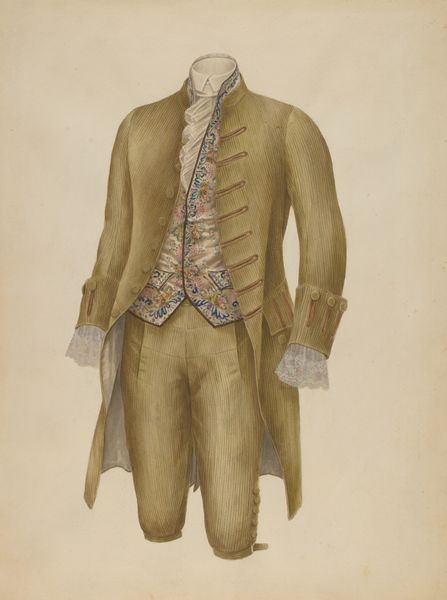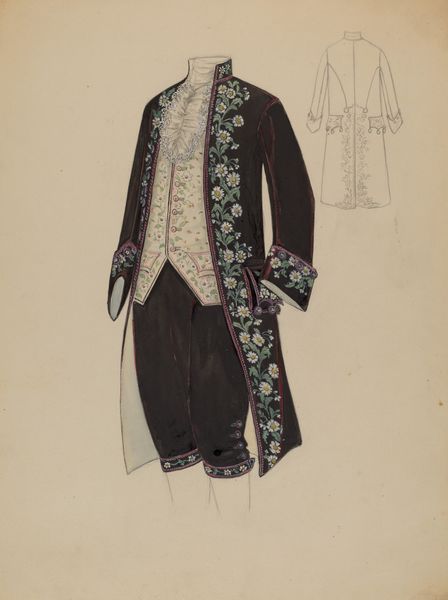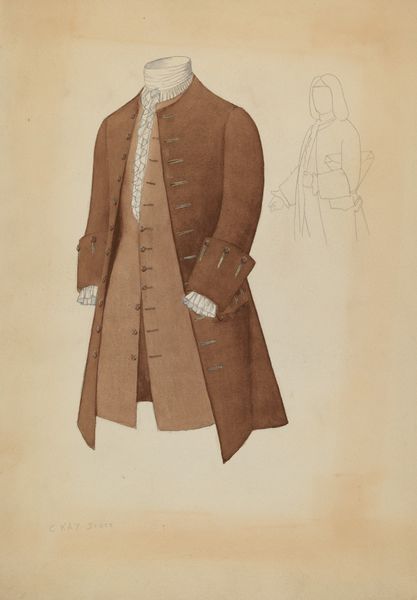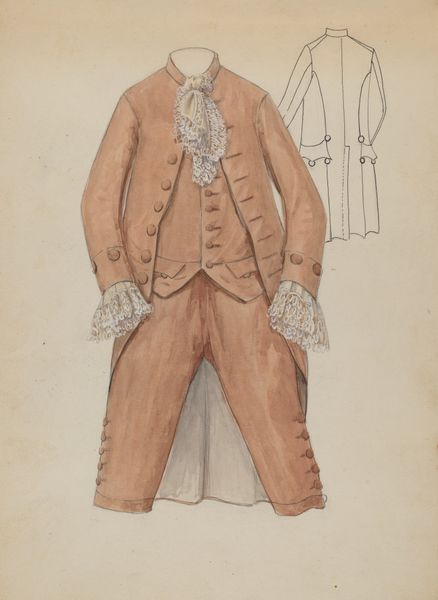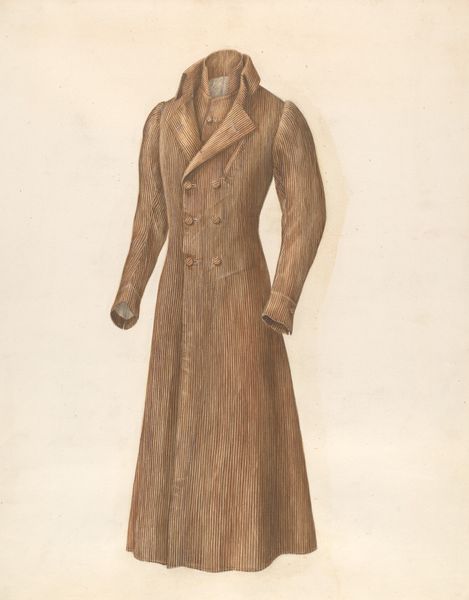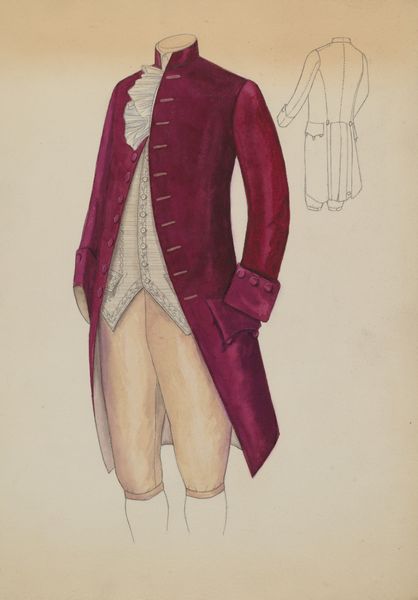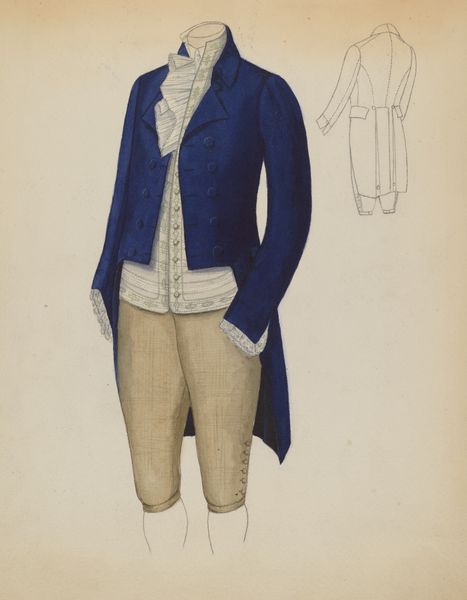
drawing, pencil, graphite
#
drawing
#
charcoal drawing
#
pencil drawing
#
pencil
#
graphite
#
graphite
#
realism
Dimensions: overall: 51.3 x 38.6 cm (20 3/16 x 15 3/16 in.)
Copyright: National Gallery of Art: CC0 1.0
Curator: The work before us, titled "Man's Suit," dates to around 1939. Henry De Wolfe rendered this piece using graphite, pencil, and charcoal. Editor: It's stark. Almost ghostly. The light reflecting off the white fabric is nicely captured by De Wolfe's hand, but the figure’s absence unsettles me. Where is the man who inhabits these clothes? Curator: Consider the context, though. This wasn’t fine art destined for a gallery. It’s likely a pattern for mass production of clothing, made at the apex of industrial tailoring. The emphasis isn't on the individual, but the ideal, mass-producible man. Editor: Yes, I understand its utilitarian purpose, but that very practicality is striking. Think of the socio-political message inherent in depicting clothes, absent of a human form. It echoes larger dialogues surrounding anonymity and standardization within consumer culture during that period. How was men's identity affected when fashion moved away from handcraft towards these reproducible molds? Curator: Exactly! The meticulous detail of the pleats, the precise lines of the jacket, the careful rendering of the buttons—all these speak to the process. And the materiality—the paper itself, the graphite used to define form—are critical aspects of a garment about to be made real, destined for sale, consumption, and, likely, obsolescence. Editor: And while it may be “only” a pattern, the institution of clothing carries immense historical weight. Uniforms denoting class, function, allegiance. This vacant suit carries echoes of military garments, even the tailored attire worn by the bourgeoisie of that era, it stands on the brink of war itself, foreshadowing cultural changes and shifts in clothing's function as the lines began blurring to accommodate military purposes.. Curator: I see what you mean about the haunting aspect now, the mass mobilization of manpower, the looming shadows cast by the approaching War.. Editor: This piece has offered me a newfound perspective to question societal messages presented by garments and consumer items in visual culture, especially during politically formative periods of history. Curator: Thinking through the production process opens us up to a new set of questions we can then investigate through the garments available in the show, revealing a broader history through labor and material culture.
Comments
No comments
Be the first to comment and join the conversation on the ultimate creative platform.
